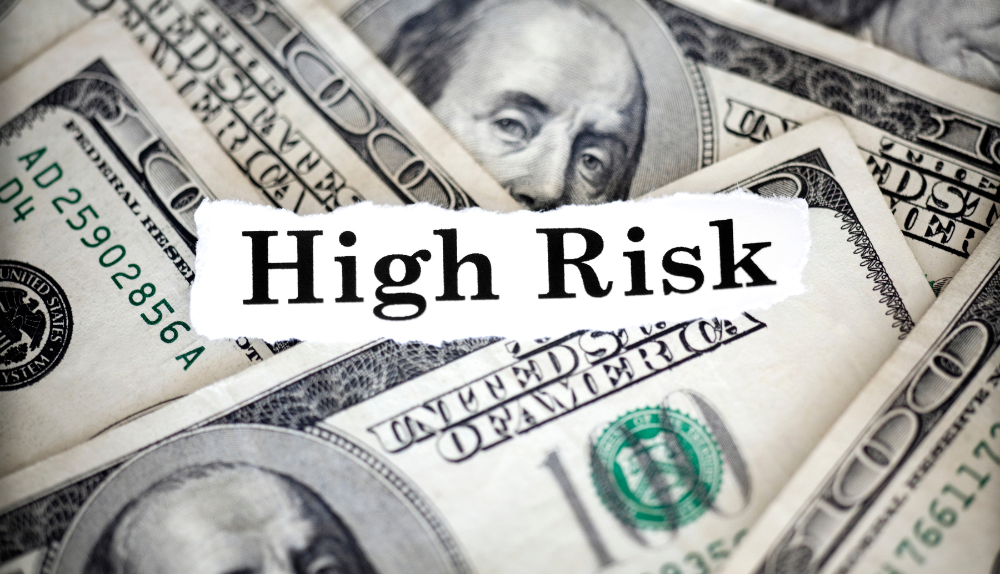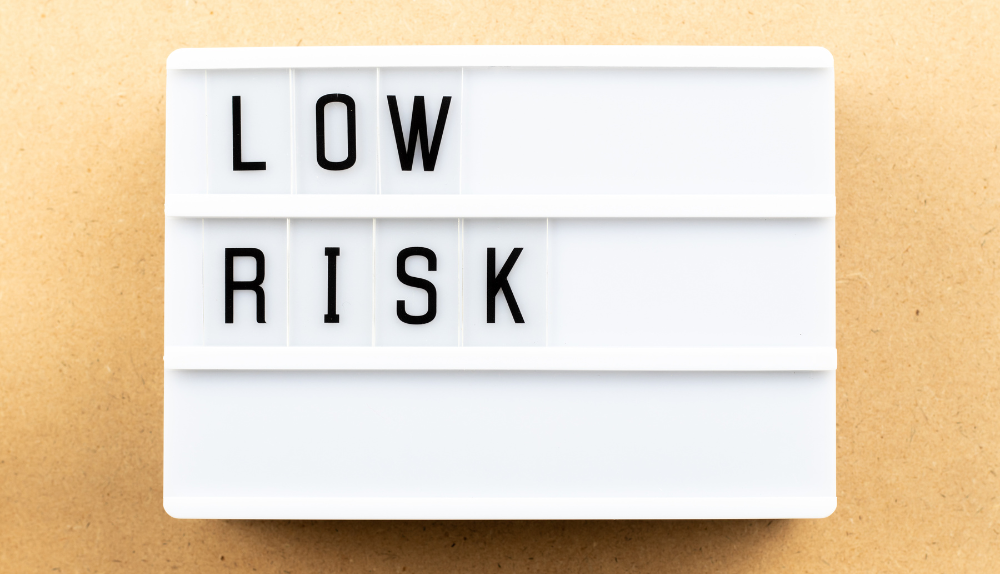
By max June 2, 2023
Knowing whether your business falls into the high-risk or low-risk category is important to ensure safe transactions. Besides that, it’s easier to find a payment processor for setting up your merchant account when you are a low-risk business. If you are wondering about your business category or the risk associated with your card transactions, you are in the right place. Let’s explore the meaning of both, how they affect your business, the difference between high-risk and low-risk transactions, and how to know which category your business falls into.
High-risk transactions refer to the payments processed through credit cards associated with an increased risk of financial loss. It’s not easy to identify these transactions, as sometimes, the companies that are identified as low-risk businesses might process high-risk transactions. These transactions are specifically risky for acquiring banks or payment processors.
With the growing popularity of contactless payments, most customers have stopped carrying cash altogether. They rely on digital wallets and credit/debit card payments for shopping. To process these transactions, businesses need a merchant account with a payment processing company. Now, a merchant account is often categorized into high-risk and low-risk based on the nature of the business, its chargeback ratio, the volume and size of transactions processed regularly, and other factors.
What is a High-risk Transaction?

Basically, all transactions processed through cards are risky. There’s always the risk of chargeback, online fraud, friendly fraud, and other issues associated with card payments.
However, some businesses are recognized as high risk because of the industry they operate in and the stigma associated with the nature of their business. Examples include alcohol companies, drug suppliers, weapon and chemical producers, gambling companies, and so on.
A 2021 survey showed that 75% of eCommerce businesses reported fraud attempts. With the number of fraudulent activities increasing at such an exponential rate, it’s become important for businesses to follow preventive measures for mitigating the risk of such transactions. To better understand this concept, let’s take a look at the examples of high-risk transactions.
Card-Not-Present Transactions
Not every customer buying online or at the retail store has a physical card to make the payment. Instead of swiping the card at the retail POS, they share the card details over the phone, email, or through other means. These are called card-not-present transactions, as customers are unable to pay using physical cards.
The risk of fraud in such payments is higher since there is no physical card to show to the retailer. There’s a chance someone can steal the card and share the details, including the card number, CVV, expiry date, etc. to process the transaction. If there’s no security measure for detecting such transactions, the cardholder might end up losing a significant amount to these fraudsters. These transactions, then, result in chargeback issued by the cardholder when they notice an unusual transaction history.
High-Risk Industries
Some companies face difficulty choosing a payment processor because of the industry they operate in. High-risk industries are at a higher risk of fraudulent transactions because of the high chances of chargeback, refund requests, and legal concerns. Some payment processors reject the request of the merchant straight away if their business falls into the high-risk industry. Examples of such businesses include adult content, gambling, drugs, alcohol, credit repair, cannabis, and more.
Expensive Products
If you sell expensive and luxury products, such as jewelry or designer clothes, you might be at a higher risk of experiencing fraudulent transactions. That’s because fraudsters target expensive products when using stolen cards. There’s also the risk of the customer issuing a chargeback request against the business in an attempt of friendly fraud.
The higher chargeback ratio means increased liability for your acquiring bank or processor. Each transaction at such stores can make a significant contribution to the business’s bottom line. Likewise, it presents a high risk for the merchant.
International Transactions
Accepting international transactions is also pretty risky for the merchant, as the security regulations and fraud prevention measures might be different in other countries. It’s even more difficult to fight a chargeback if the transaction was processed overseas.
First-Time Customers
It’s obvious that a repeat customer is less likely to make a fraud attempt at your store than a first-time buyer. Merchants are more confident about working with repeat customers since they have already established a strong relationship with them. Technically, whether the customer is new or existing has nothing to do with how likely they are to use someone’s stolen credit card. But knowing a customer will help you learn about their buying patterns and their personality overall. So, you can rest assured that they are trusted buyers.
What are Low-Risk Transactions?

A low-risk transaction refers to credit card payments that carry minimal risk. These businesses are less likely to experience fraud, chargeback, refunds, and other legal or transaction-related issues. Businesses operating a low-risk industry, such as a retail store, and accepting cash payments are categorized into the low-risk category. Simply put, businesses with a lower risk of disputes and chargebacks are considered low-risk businesses.
Let’s check out some examples of low-risk transactions.
Digital Authentication
Card networks and payment processors have implemented many security tools to minimize the risk associated with card transactions. The programs are mainly designed to prevent fraudulent activities and protect people from using stolen cards. Digital authentication practices have multiple layers of verification processes, which make it nearly impossible for buyers to conduct fraudulent transactions.
In-person Transactions
Although these transactions are not completely immune to fraud, they are less likely to result in illegitimate transactions than their card-not-present counterpart. It’s less likely for a fraudster to steal a physical credit card than to steal the number and details.
Selling Low-risk Products
The product you sell or the nature of your business significantly affects the risk involved in the transaction. Some products are considered riskier than others. The low-risk goods include retail products that have considerably lower margins than luxury items. Usually, businesses selling household items fall into this category.
High-Risk And Low-Risk Transactions
Low-risk businesses that operate retail stores, grocery markets, and other businesses involving minimal risk enjoy greater benefits in the long run. For starters, they can obtain a loan easily or can create a low-fee merchant account with any payment processor or an acquiring bank. Financial institutions feel confident working with low-risk businesses, as they are less likely to cause any financial loss or a legal issue.
High-risk businesses, on the other hand, are often charged higher by their payment processors. The loan approval for these businesses is quite a challenging process, since trusting a business that sells CBD, drugs, alcohol, gambling-related products, adult content, and other such controversial products involves a great risk. Even if a high-risk merchant manages to secure a loan or open a merchant account with a business, they will get it at a considerably higher fee than low-risk merchants.
That means you might have to pay a higher amount in processing fee for each transaction. It’s important that you understand your risk category and take steps to mitigate the risk so that you don’t incur financial loss or struggle with the high chargeback ratio or processing fee.
Protecting Your Business from Fraud

The transaction risks vary heavily from one business to another. As mentioned earlier, it depends on the nature of your business, as well as, the payment methods you accept. The higher number of card-not-present transactions processed at your store, the higher the risk of fraudulent activities occurring. Protecting your business from such fraudulent practices requires the right preventive measures, authentication, and other important security protocols.
Tools to Prevent High-Risk Business Fraud
- CVV Verification: It’s become mandatory in today’s competitive and high-risk business world. You can find the three-digit CVV code on the back of the physical credit card. You should ask your customers to type in the CVV in addition to the card number and the expiry date.
- Address Verification: This is an additional layer of protection for customers processing payments through credit/debit cards. Someone can steal your credit card details, but it’s difficult for them to steal your address information. Customers are supposed to enter their zip code and street address to verify their address for processing the transaction successfully. If the address doesn’t match the address in their issuing bank’s record, their transaction will be declined.
- Two-Factor Authentication: Most merchants have implemented two-factor authentication, which sends a one-time password to the cardholder’s registered mobile number. This is usually the last step of completing your transaction. The transaction won’t be initiated until the customer submits this code to the payment gateway.
Bottom Line
The above preventive measures are for card-not-present transactions. You can also implement security practices for transactions where the cardholder swipes the card physically at the retail POS. A few other steps, like fighting the chargeback, can help a lot in mitigating the risk of fraudulent transactions.
You should dispute the chargeback if it seems fake. PCI has established security standards for merchants that ensure customers’ protection. Following these standards and implementing the latest encryption tools are other ways to minimize the risk of friendly fraud.
